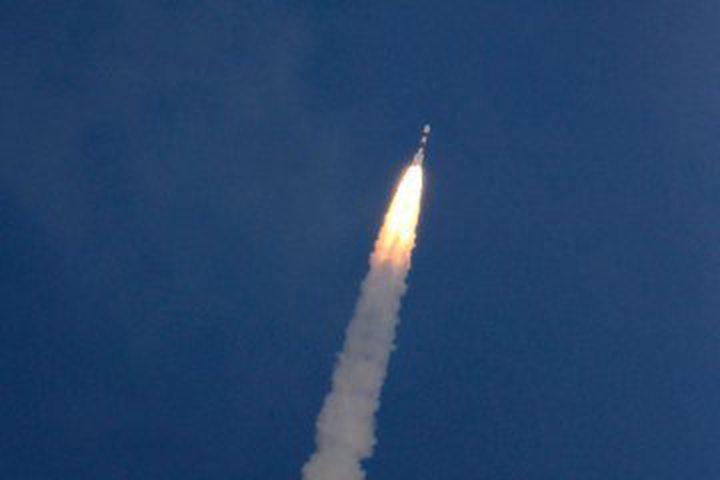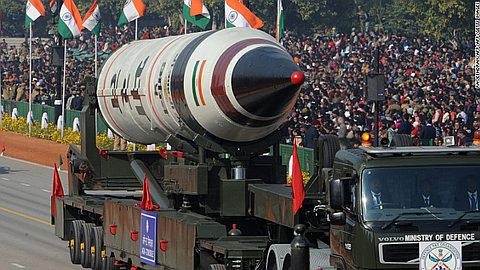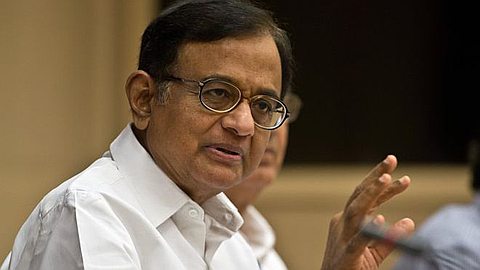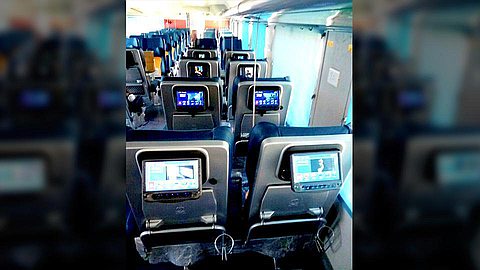India Races To Space With a Mission to Mars

As the rocket sped off towards space from Sriharikota, a small island near Chennai in the southern part of the country, it was a huge boost for the Indian Space Research Organization (ISRO), which started in the 1960s with a local church as its main office, a converted bishop’s house as its workshop and a cowshed as its laboratory. The organization launched India’s first rocket from the middle of a coconut plantation in the southern state of Kerala in 1963.
Tuesday’s launch is just the first stage of Mangalyaan, as the mission has been named. The 1,350-kilogram orbiter will travel 780 million kilometers before reaching the Red Planet in September next year. “The biggest challenge will be precisely navigating the space craft to Mars,” K. Radhakrishnan, chairman of the Indian space agency, told the AP. “We will know if we pass our examination on Sept. 24, 2014.”
If it succeeds in reaching the surface, the Mars vehicle will probe the Red Planet for signs of life and test equipment for deep-space travel. India’s Prime Minister Manmohan Singh called Mangalyaan a huge step for India in the area of science and technology when he announced the mission from the parapets of the historic Red Fort – the seat of Mughal power – during his Independence Day speech in 2012.
India’s Mars mission took fifteen months to complete at a cost of $74 million, the cheapest Mars mission yet attempted. According to a tally by the United States’ National Aeronautics and Space Administration (NASA), there have been 40 missions to Mars by the U.S., Russia and the European Union, of which 18 succeeded. China attempted to send a space probe to Mars in 2011, but the craft failed to exit Earth’s orbit. “At least by NASA’s standards, the total mission cost is very low,” David Paige, professor of Planetary Science at the University of California, Los Angeles told TIME. “If India can be successful with this mission, it will open up new opportunities for more frequent low-cost Mars missions.”
One of NASA’s upcoming missions, MAVEN, which will be launched later this month, took five years and $679 million to build, a stark contrast with Mangalyaan in terms of time and money. “The global community is really excited about the low cost of this mission as nobody has billions of dollars lying around for planetary exploration,” says Pallava Bagla science editor at Indian television channel NDTV and author of Destination Moon: India’s Quest for Moon, Mars and Beyond.
India’s space program has always been something of a trailblazer despite its limited resources. The program has focused on what has been called people-centric applications. Its first step towards planetary exploration came only in 2008, when it sent an $89 million mission to the moon.
But critics have argued against the Mars mission, insisting that India should instead be diverting the millions towards social programs. Jean Drèze, a Belgian development economist, told the Financial Times last year, “I don’t understand the importance of India sending a space mission to Mars when half of its children are undernourished and half of all Indian families have no access to sanitation.”
Supporters counter that all Indians will ultimately benefit from the technological advances space exploration could produce. “The technology developed from such cutting-edge space exploration will ultimately trickle down to benefit the common man,” says Radhakrishnan.
Perhaps the best example of that so far may be how the country prepared for Cyclone Phailin, a powerful tropical storm that struck India in October. High-tech satellites and Doppler Radars along the coast of the Bay of Bengal gave early warnings, allowing for the evacuation of hundreds of thousands of people from low-lying areas. Less than 50 were reported killed by Phailin, while similar storms in the past wreaked unimaginable devastation. In 1999, the cyclone Orissa killed more than 10,000 people.
“Having a state-of-the art fleet of Earth-observation and telecommunication satellites for a subcontinent like India is a necessity, not a luxury,” says Susmita Mohanty, CEO of Earth2orbit, India’s first private space start-up. “As a nation, not only should we ensure food, shelter, education, jobs, healthcare and good public transport for our masses, but also give them a reason to dream, to dare, to explore, to reach for the stars.”





